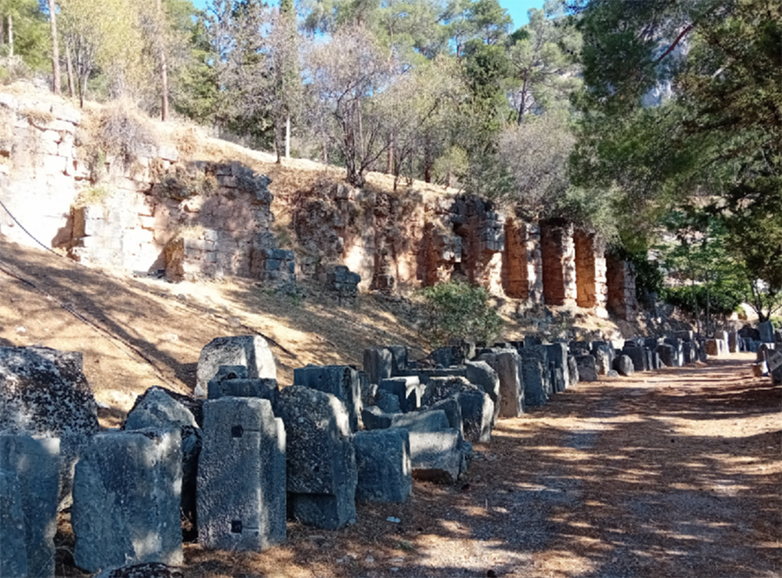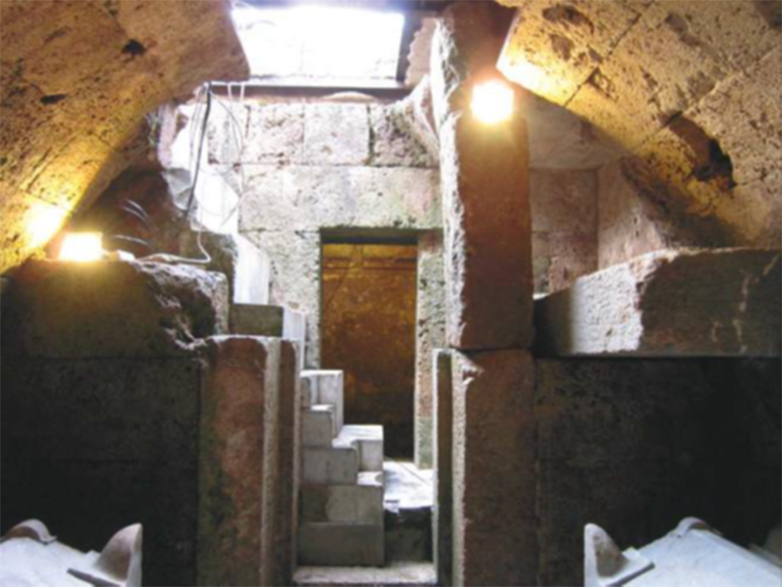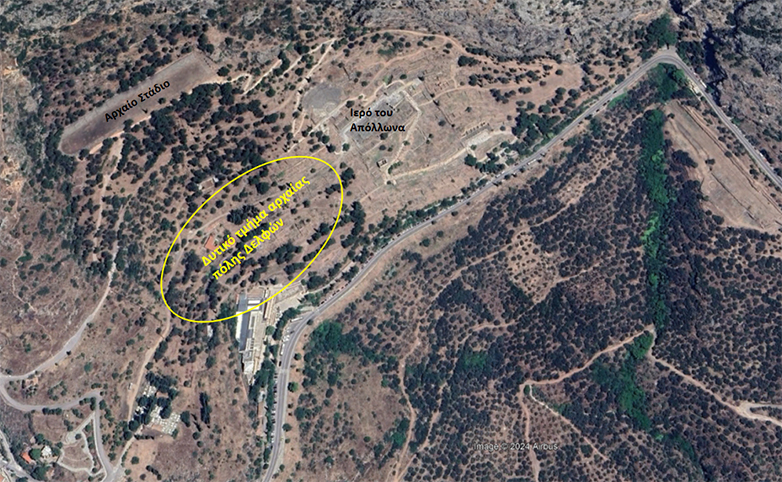The promotion of the western part of the ancient city of Delphi is included by the Ministry of Culture in all the projects it has launched and is implementing for the protection and promotion of the archaeological site of Delphi, through the Ephorate of Antiquities of Phocis.
In the context of the maturation studies, the restoration, consolidation and highlighting of monuments of the western ancient city of Delphi have already been prepared and received the positive opinion of the Central Archaeological Council – topographical, digital mapping and mapping – as well as the geotechnical study for immediate intervention measures on the cisterns, the architectural study of highlighting the district of Hero Blum, the study of the maintenance of the mosaic floors of the monuments and analysis of the materials.
ADVERTISING SPACE
The studies and the resulting projects for the restoration, consolidation and highlighting of the monuments of the western ancient city of Delphi are financed by the Regional Operational Program of Central Greece, in the NSRF 2014-2020 and 2021-2027.
Western part of the ancient city of Delphi
The Minister of Culture, Lina Mendoni, said: “Delphi, in addition to the exceptional archaeological and historical importance of the archaeological site and its monuments, are a brand name and a unique landmark for our homeland, due to the strong symbolism and values they contain. For the Ministry of Culture, from 2019, Delphi is a clear priority, due to its above characteristics. With resources from the Recovery Fund, in particular, which exceed 18,000,000 euros, the Ministry of Culture is carrying out the project of completely renovating the conference space of the European Cultural Center of Delphi and the project of fixing the rock masses above the ancient stadium. At the same time, in collaboration with the Region of Central Greece and with resources from the NSRF 2021-2027 PEP, we have launched a series of projects to preserve and highlight the monuments of the archaeological site, in order to protect them, but also to give new spaces to visitors, which in recent years they have been steadily increasing”.
The ancient city of Delphi is located around the Sanctuary of Apollo. In the western part of the archaeological site, which extends to the cemetery of the modern settlement, an important part of the city has been uncovered. In this area, the city is formed in three main areas, where already from the period of the Great Excavation by the French School of Athens (1894-1902) but also during the four phases of construction of the Archaeological Museum of Delphi, extensive parts of its residential areas were revealed late Roman and early Byzantine periods, as well as a large part of the ancient western cemetery.
ADVERTISING SPACE

Western part of ancient city, Cisterna
However, during the Great Excavation period, due to the priority to uncover the ancient sanctuary and the most ancient archaeological layers, many of the later remains were not adequately documented. From the existing finds, it appears that the ancient city was built in an irregular arrangement on the terraces of the area, as they had already been formed since the classical period. In addition to the residential remains, in the western part of the archaeological site there are important monuments, such as the burial of Iroos Blum, the Western Stoa (Stoa of the Aetoles) of the sanctuary, remains of a brick road from the Mycenaean period, monumental tombs from the Roman period and the cistern from the late of the Roman period, the construction of which indicates the extensive water supply needs of the settlement.
The prehistoric remains in the entire archaeological site are sporadically preserved and mainly concern a significant number of Mycenaean tombs, which are almost completely demolished.

View of the interior of Hero Blum
The burial of Iroos Blum is located on the hill carved at the height of the Theban treasure and is the best-preserved monument of its kind in mainland Greece. The monument was named after the first excavator, G. Blum, who was killed in World War I, and the study of the monument was subsequently undertaken (1972 – 1973) by J. Roger. Its latest use is placed around the second half of the 2nd century. AD, according to the relief decoration of one of the three surviving sarcophagi. The monument consisted of two parts, an above-ground two-story Corinthian-style temple and an underground two-room chamber with a crypt. Three marble sarcophagi were placed in one room.
Inside the other room are two porous sarcophagi. It is noted that the burial Hero Blum is directly connected with the events of the Second World War in the area, because during the war it was a hiding place for the sculptures of the Delphi Museum, where they remained until 1949.
ADVERTISING SPACE
The neighborhood of Iroos Blum is the largest residential complex of the western city, occupying an area of about 1840 sq.m. Most of it was built in the late Roman period.

To the west of the precinct of the Temple of Apollo, on a 2000 sq.m. plateau, the remains of the Western Stoa are preserved, one of the most imposing monuments, which, today, is not part of the organized and visitable archaeological site of Delphi. In ancient times it was an important place and a monumental entrance for visitors to the Temple of Apollo and to the theater. The first phase of the Stoa was dated to the 4th century BC. and was recognized as the Armory of the mosque.
It had a double colonnade with 29 columns on the outside and 15 on the inside, which are not preserved today. The West Stoa was evacuated after its partial destruction. During the Roman period, part of it was converted into a house with private thermal baths. Here, the large cistern is also preserved, which covered the increased water supply needs of the settlement and the operation of the baths.

Architectural study highlighting the neighborhood of Hero Blum in the western city of Delphi
The work to highlight the western part of the ancient city of Delphi, which is bounded by the path under the Blum quarter to the anderis of the Western Stoa and from the precinct of the sanctuary of Apollo to the entrance of the cemetery, foresees interventions related to the management of the scattered architectural members, in the uncovering of the floors of the late Roman houses, in the inclusion of the area in the archaeological site to be visited by using parts of the existing route.
From the Sanctuary of Apollo, two branches of the route are formed: One will pass in front of the Western Stoa and end at the exit to the modern cemetery, and the other will lead to the viewing area above the Blum Hero’s quarter.
Through these routes, the visitor will pass through the important monuments of the western city and will be able to perceive its extent and organization. With the completion of the works, in 2027, the visited archaeological site will have been significantly expanded and visitors will enjoy new experiences.
Source: www.zougla.gr


